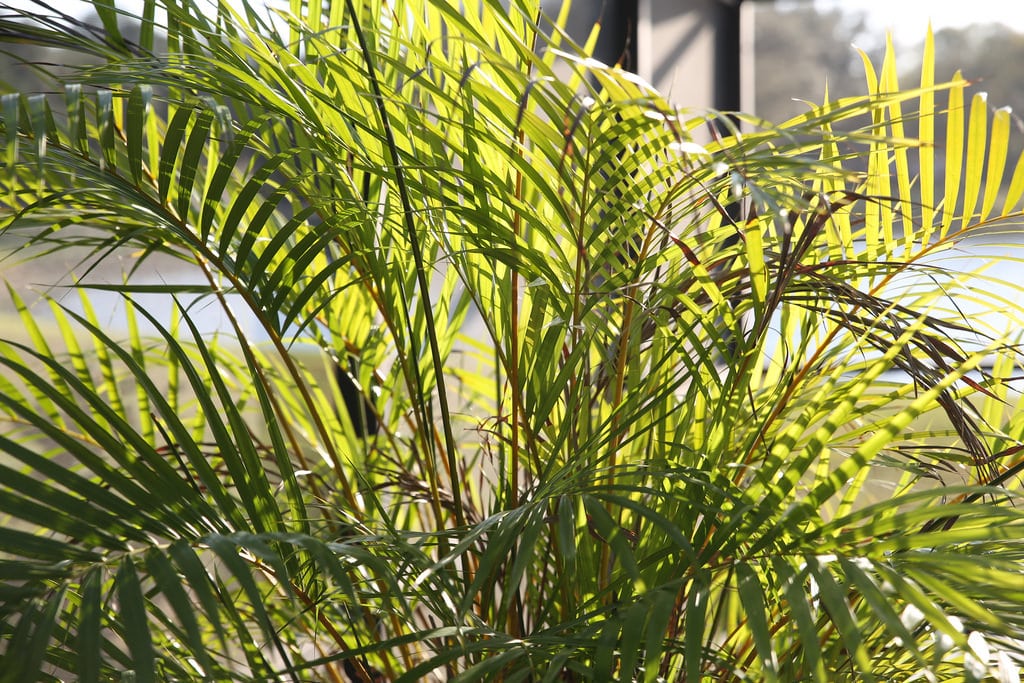Majesty Palm Care – What To Do With A Yellow Majesty Palm


Majesty palms are a native plant to tropical Madagascar. While many growers won’t have the climate necessary to grow this palm, majesty palm care is possible outdoors in USDA zones 10 and 11. Majesty palm, or Ravenea glauca, is most commonly sold in the United States as a houseplant. Although the plants do require quite a bit of effort and attention to detail in order to get the fronds to truly flourish, it is possible to grow beautiful palm specimens indoors in containers.
Growing a Majesty Palm
While majesty palms are somewhat more demanding than most houseplants, it is possible to grow them successfully in containers. First and foremost, it’s important to select a container large enough to contain the plant’s robust root system. Well amended soil, as well as frequent treatment with fertilizer, is essential for this heavy feeding plant. One of the most common issues growers of majesty palm may encounter are yellowing leaves. Yellow majesty palm leaves are not only alarming to plant owners, but a sign that the plants are experiencing stress which could be caused by a variety of factors.
Majesty Palm Turning Yellow
If you are growing a majesty palm plant and it begins to show signs of yellowing, the following issues are most likely the problem: Light– Unlike some other shade-tolerant houseplants, majesty palms require quite a bit more sunlight to truly thrive. When growing these plants indoors, make certain to situate the plants where they are able to receive at least six hours of sunlight each day. This is especially important during the winter and low light months. Inadequate light will lead to insufficient development of new leaves, and ultimately, the demise of the plant. Moisture– When growing majesty palm, it is important that the soil is not allowed to dry out. Maintaining a consistent moisture level in potted plants is key to reducing water related stress, as well as preventing fronds from turning yellow. Dry soils and low humidity may cause leaves to dry out and drop from the plant. Conversely, keeping soils too wet will also cause harm and yellowing of the plant. Soggy soils may also contribute to the development of fungal diseases and root rot.
Gardening tips, videos, info and more delivered right to your inbox!
Sign up for the Gardening Know How newsletter today and receive a free copy of our e-book "How to Grow Delicious Tomatoes".

Tonya Barnett has been gardening for 13 years. Flowers are her passion. She has transformed her backyard into a cut flower garden, which she regularly chronicles on her YouTube channel http://www.youtube.com/@tonyawiththeflowers.
-
 Looking For Plants To Give You The Soft And Fuzzies? Try These 5 Fuzzy Leaf Plant Options
Looking For Plants To Give You The Soft And Fuzzies? Try These 5 Fuzzy Leaf Plant OptionsLovers of texture, drama, silver foliage and tactile plants will adore these special sensory garden additions. These fuzzy leaf plant options will leave you all aglow
By Susan Albert
-
 Get Ready For A Summer Of Hummers! Grow These Full Sun Hummingbird Plants and Flowers
Get Ready For A Summer Of Hummers! Grow These Full Sun Hummingbird Plants and FlowersIf you’re lucky enough to enjoy a sunny backyard, make sure you are maxing out on your pollinator opportunities and grow these full sun hummingbird plants and flowers
By Tonya Barnett